When a child grows up, it is time to prepare for kindergarten. It is important for parents to make every effort to ensure that the child is comfortable in the new place. Pockets for a locker in the locker room will help the child to conveniently arrange his things. The article will tell you how to sew pockets for a locker in kindergarten with your own hands.
Varieties
In order for the child to have everything he needs, there should be room in the pockets on the cabinet for things like:
- socks;
- T-shirt;
- tights;
- sweater;
- handkerchief.
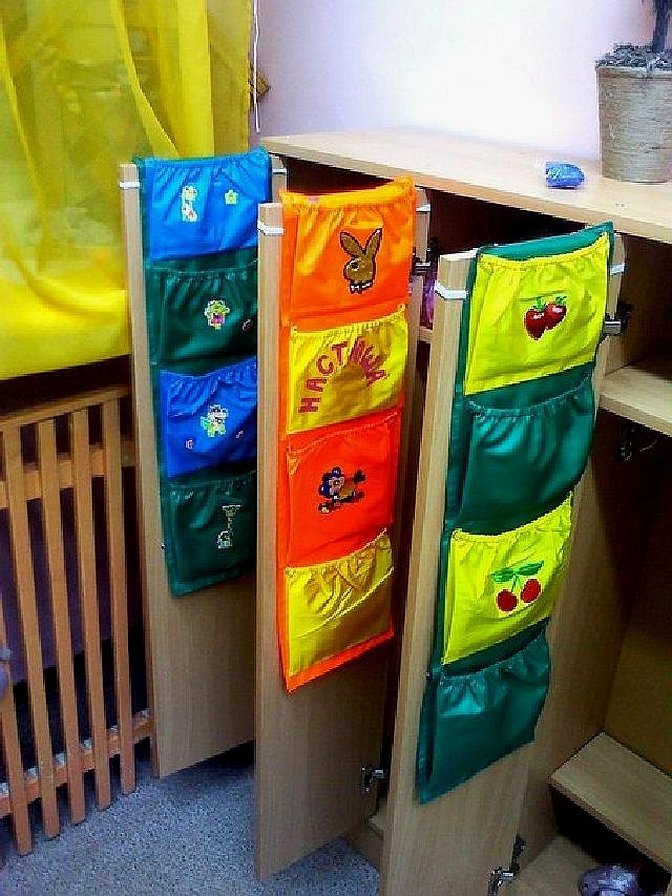
You may need not only these, but also many other things that are convenient to store in special pockets (for example, a comb, hairpins for a girl). Of course, these things can be folded in a neat pile or placed in a bag, but it is much more convenient to use pockets. Usually they are sewn onto fabric and hung on the door of the cabinet in which clothes are stored.

Pockets with different methods of fastening to the door are used. The following options can be used:
- The most common is the use of eyelets or loops. They are hung on screws screwed into the cabinet door or hooks attached to it.
- You can use a rubber band for fastening. In this case, you will not need to install hooks or hammer nails. Therefore, this method is convenient, but the pockets on the rubber band will sag.
- You can attach it with sticky tape. To secure it more securely, bend it over the top edge of the door.
- To hang the pockets, you can use double-sided tape. This method will be convenient in cases where it is not possible to screw screws into the door or attach hooks.
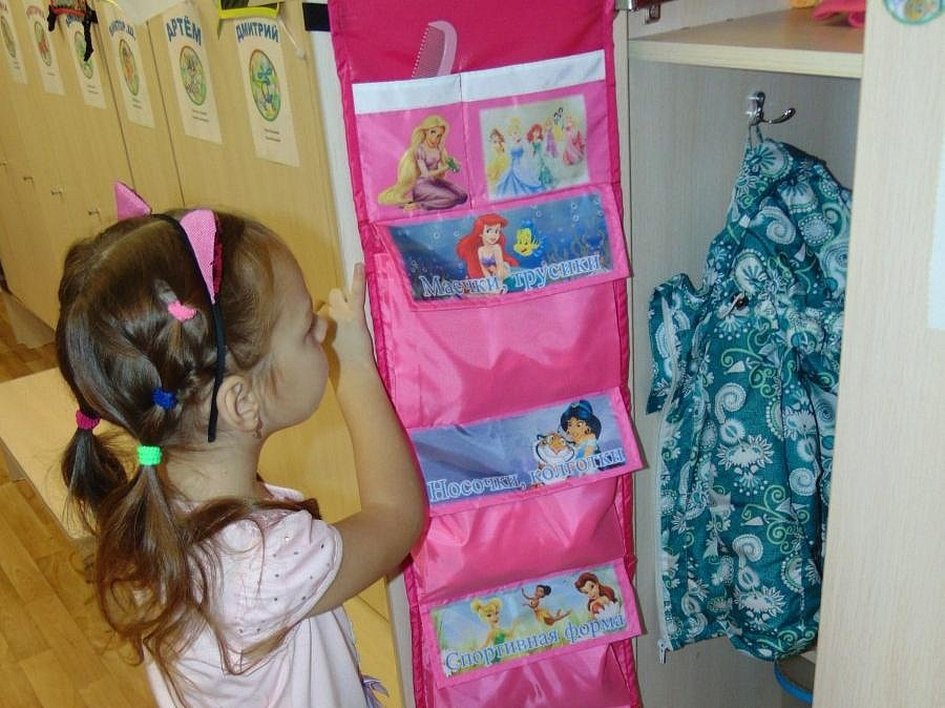
Each pocket can be made open or closed. The following options can be used:
- Using buttons or velcro.
- Make sure that the elastic bands go through the top edge.
- Sometimes open pockets work.
- It will be beautiful if you decorate them with embroidery or appliques depicting your favorite cartoon characters.
For attaching to the door, it is convenient if the fabric with pockets is folded to the outside of the door. In this case, you can attach a recognizable picture for each child on the outside and write his name.
For your information! This will allow the kindergarten teacher to easily find a specific child’s things, and the child to know at first glance where his things are stored.
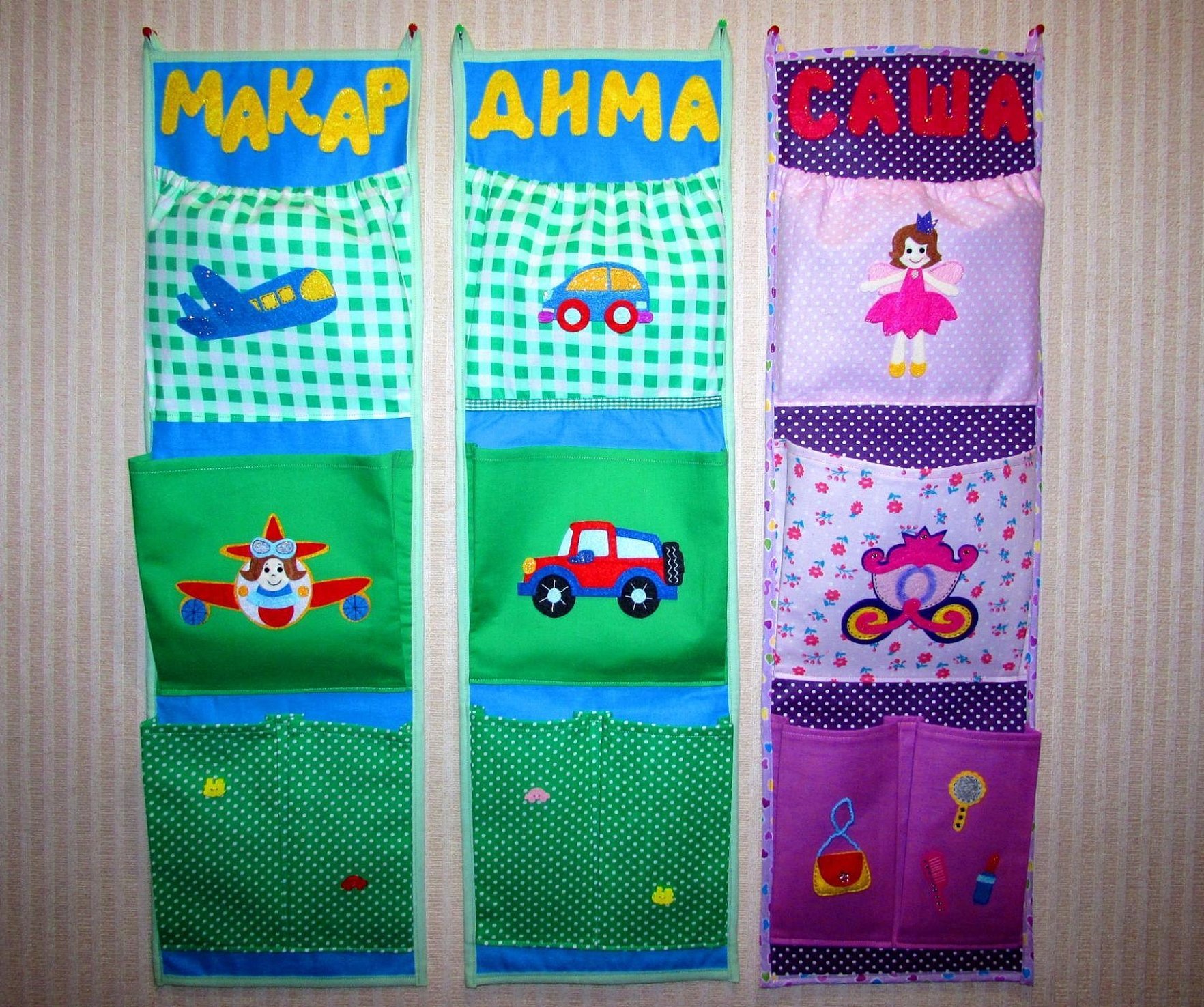
The models used can be distinguished by the size of the pockets:
- Large pockets (made from old jeans, for example) can be used, taking up the entire door or most of it.
- Sometimes they are made medium-sized, half the size of a door or a little larger.
- The use of models that use several small pockets is widespread.
Please note! When choosing how to sew pockets for a kindergarten locker yourself, you need to consider that a small number of pockets will not allow you to properly organize the storage of your baby's things, and too small ones will not always allow you to find enough space for larger changeable items.
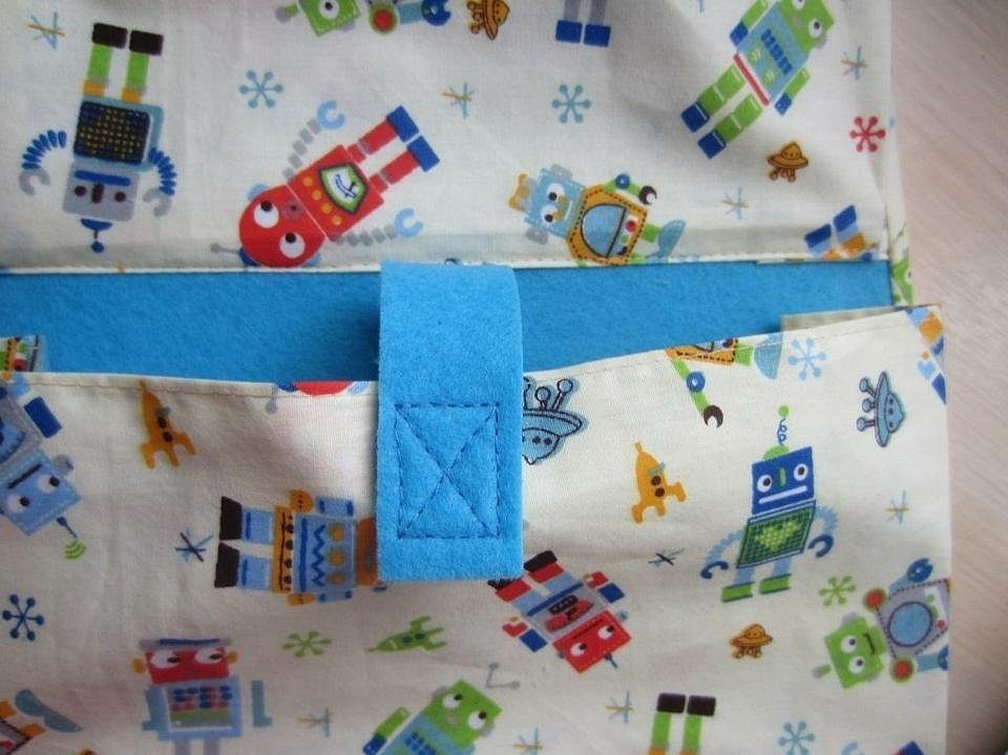
Necessary materials and tools
In order to start making, you will need to prepare the necessary materials and tools. For the master class, you will first need to determine what model of organizer will be created and choose the method of fastening to the door.
The following materials can be used as a base:
- Thick fabrics: tarpaulin, raincoat fabric, fabric from old jeans or similar.
- A thin sheet of plastic.
- Almost any textile can be used, but its strength will be lower than in the cases discussed above.
It is necessary to draw a diagram according to which the master will perform the work. On its basis, the calculation of the necessary materials is made. For example, for an organizer measuring 80 by 30 cm, you will need to prepare the following:
- 1 square meter of main and lining fabric;
- interlining in the required quantity;
- scissors, awl, thread and needles;
- a sealing material will be required to increase rigidity;
- Velcro or buttons - to fasten pockets;
- some elastic;
- materials for decorative design.
When thinking about how to sew pockets for a child in kindergarten, it is better to try to make not just a place to store spare clothes, but also a beautiful piece that can please the child. For this purpose, you can use appliques, embroidery, ribbons, braid or other similar materials.
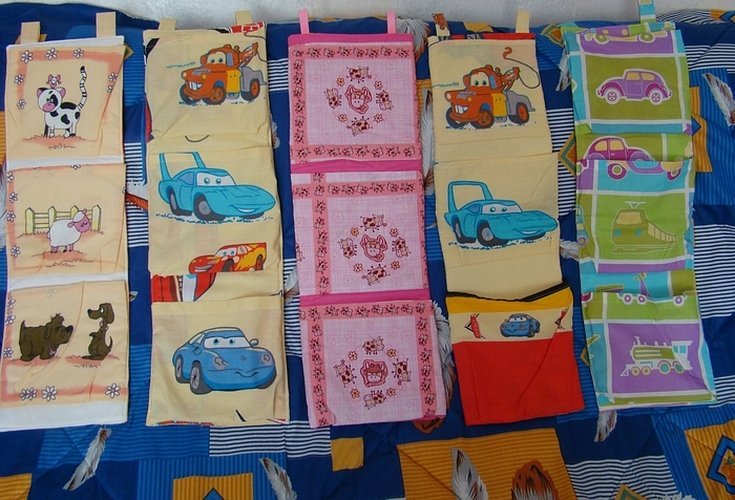
When creating this product, it is necessary to ensure that it can be easily washed (regardless of size) and dried just as easily and quickly.
Please note! It is not recommended to use cardboard to increase rigidity, as it may become deformed when washed.
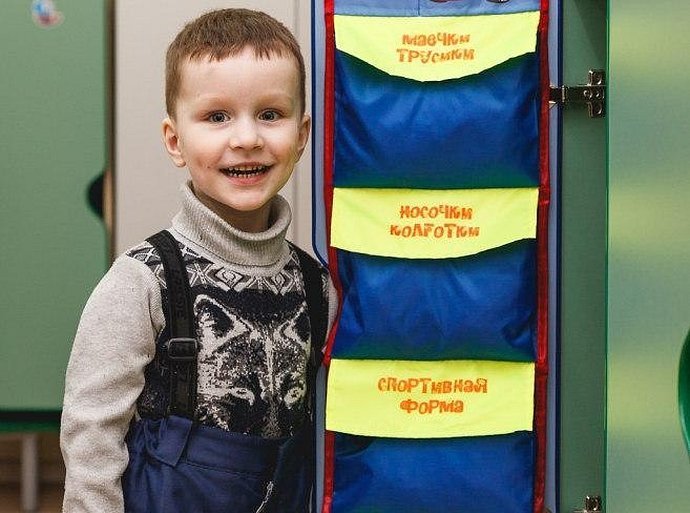
You can use two wooden strips to decorate the top and bottom edges. Not only will they improve the appearance, but they will also prevent the structure from folding when the pockets are overfilled.
Master class on making a pocket
To sew a children's locker with the chosen pattern, you first need to make a base, and then sew pockets to it. How to make this is described below.
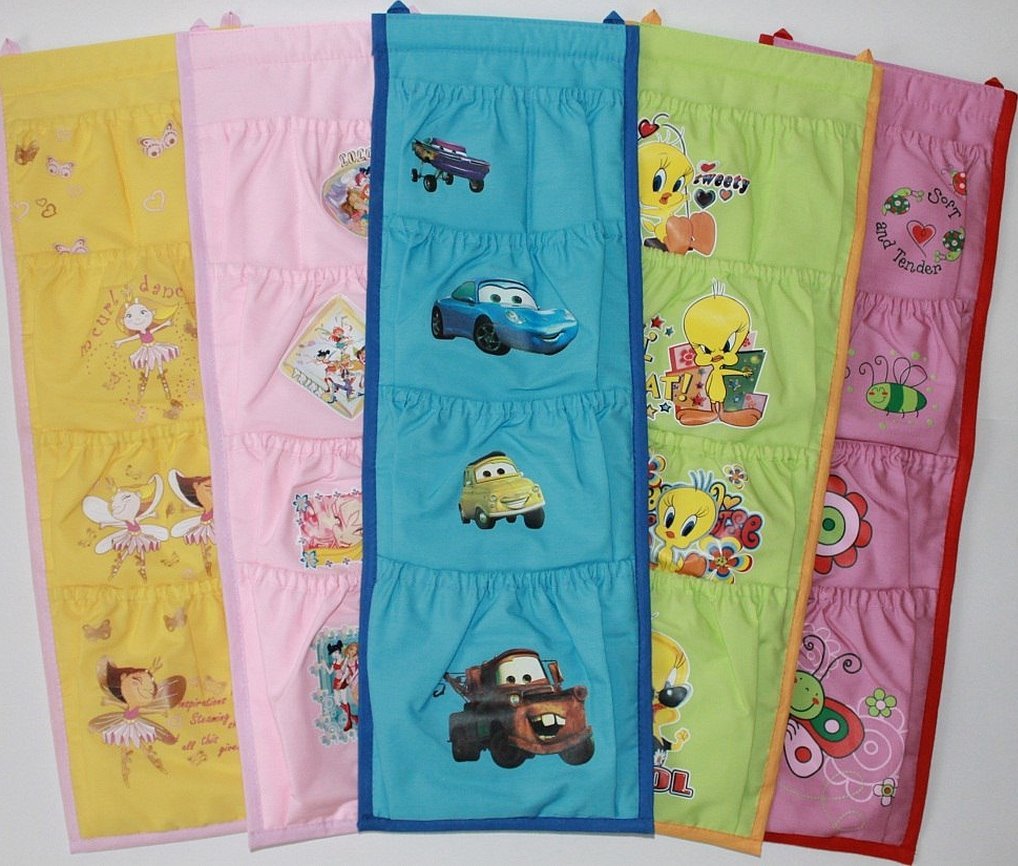
Pattern
If you consider a pattern of pockets for a locker in a kindergarten, made with your own hands, measuring 80 by 30 cm, then you need to start with preparing the base. To do this, you will need to make two pieces of fabric of this size. You will need two large pockets and several smaller ones.
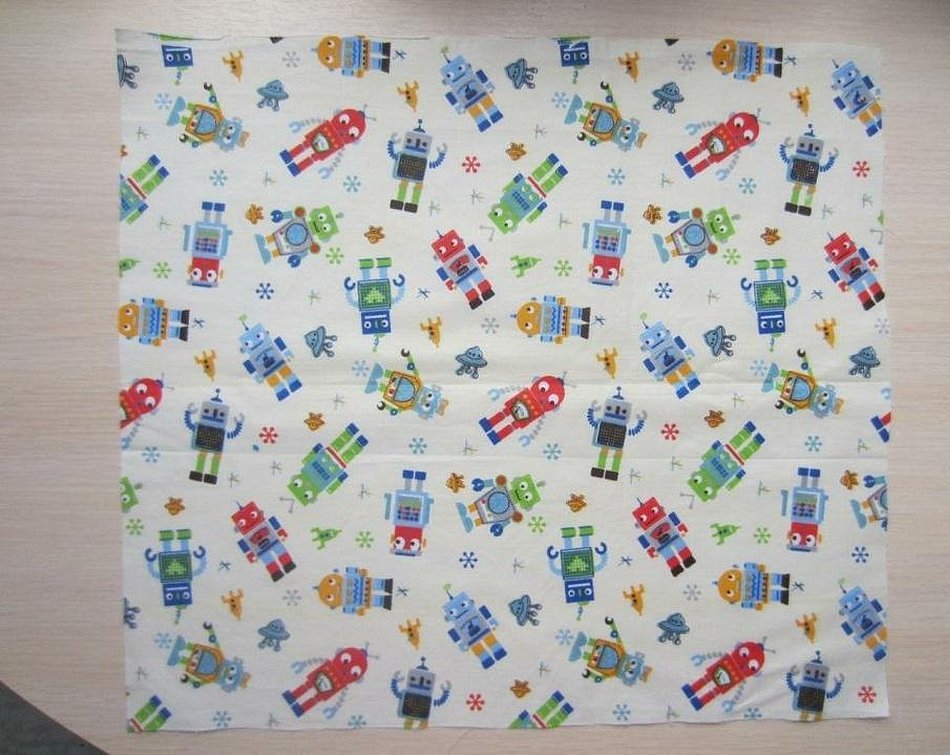
Assembly (sewing) yourself
When sewing a pocket, you need to fold three pieces of the same shape:
- main fabric;
- layer of non-woven fabric;
- lining.
They are placed in the specified order and sewn with a basting stitch to the base. The top of each pocket is folded inward. Then it must be stitched. At the same time, a pre-prepared elastic band is passed inside. It is slightly pulled together and secured along the edges of the pocket.
The bottom of the pocket is sewn using a hidden seam. Then the sides are attached.
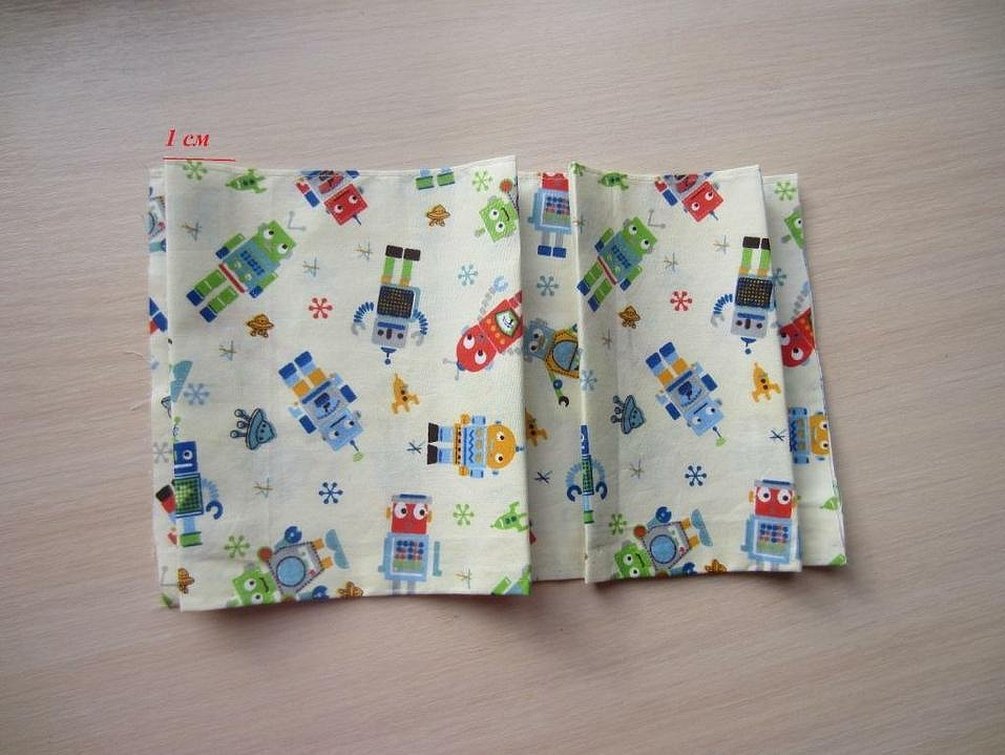
Processing of branches
After the pockets are made, they need to be decorated. The easiest way to do this is to stick on appliques with fairy-tale characters. It will look beautiful if the pockets are embroidered beforehand. The appliques are attached before the pocket is sewn on.
Step-by-step instructions for processing pockets are as follows. The lower side edges are folded in the form of a deep fold. This is necessary to give the pockets volume. To make flaps to close the pockets, they are cut in the shape of a trapezoid and sewn to the base by the wider part. For fastening, it is convenient to use a Velcro connection.
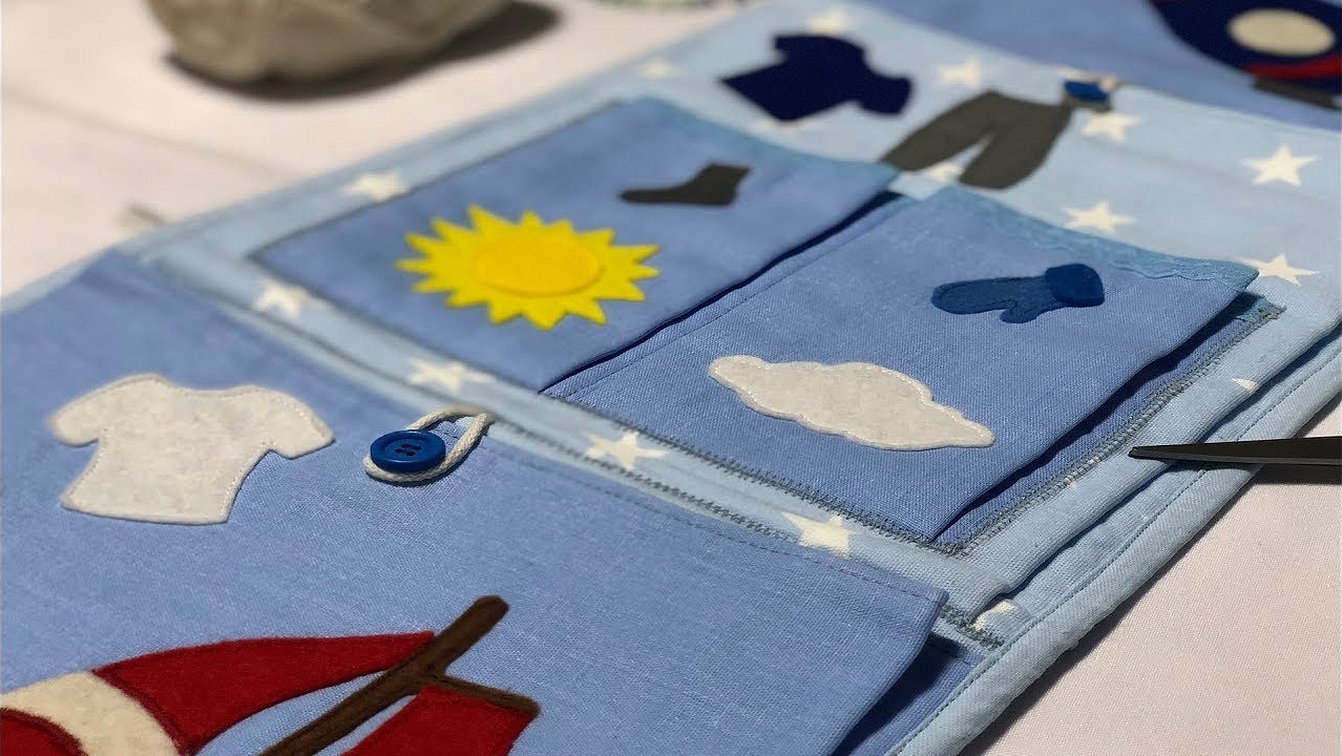
How to sew an organizer for a locker in a kindergarten
When creating an organizer, it is important to make pockets that will meet the child's needs for a change of clothes. In particular, it is recommended to provide a place for clothes that need to be washed. The organizer should be comfortable for the child and not contain parts that can injure him (for example, protruding nails and screws).
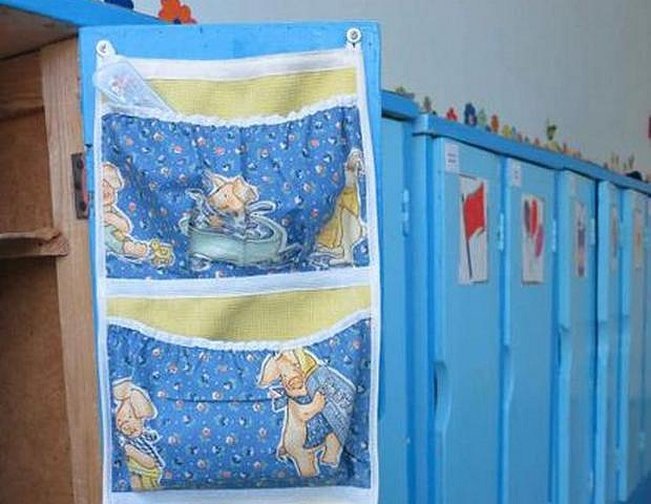
A beautiful and convenient organizer will make your child's life easier and will allow you to take care of him/her even in kindergarten. It is important to choose a scheme that will suit your child in the best way. And, of course, such a type of daily use item will help to teach the young creature order and personal discipline.




